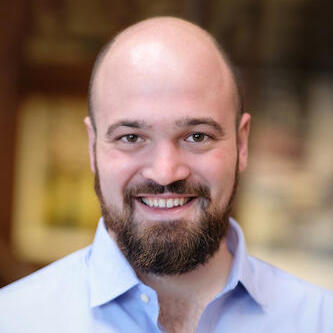Pat Pannuto
University of California, San Diego
ppannuto@ucsd.edu | 3202 CSE | +1 858 822 2924 | Calendar
Publications | CV | Talks | Teaching | Fellowships & Awards
I am interested in the boundary between the digital and physical world. My research aims to expand the reach of computational infrastructure to sense and actuate more of the physical world.
My expertise is in the design and implementation of resource constrained computing systems. These are systems whose deployment in the world constrains their form factor, connectivity, deployability, and maintainability, which often must then operate on microwatts of power, with only kilobytes of memory and effectively kilobit/second lossy communication links – yet the systems as a whole must be accurate, timely, and reliable.
I am always excited to learn about new and interesting problems that we may be able to solve. In the past, this has included efforts to embed computation in more places with the world's smallest computer, to build systems for human social interaction tracking to support epidemiologists and psychologists, to design infrastructure to support city-scale sensing, and to develop technology capable of country-wide grid health monitoring.
News
- 2024-12: Tyler, Samir, and Anthony's paper on the security of embedded operating systems won a Best Paper Award – Congratulations Tyler, Samir, Anthony, and Leon!
- 2024-10: Alex awarded a Qualcomm Innovation Fellowship – Congratulations Alex!
- 2024-06: We're hosting Tock World 7 at UCSD this year, come join us!
- 2023-10: Jen awarded a Google PhD Fellowship – Congratulations Jen!
- 2023-10: Alexander's paper EmbHD: A Library for Hyperdimensional Computing Research on MCU-Class Devices published at NET4us 2023.
- 2023-03: Jen's paper repurposing smartphones as servers honored with a Distinguished Paper Award at ASPLOS'23 – Congratulations Jen!
Further back in time...
- 2023-02: Alex B's paper demonstrating data muling over the Apple Find My network published at HotMobile'23.
- 2023-01: Introduction to Development Engineering textbook published (contrib: Chapter 6).
- 2022-11: Alex Y's paper EffiSenseSee: Towards Classifying Light Bulb Types and Energy Efficiency with Camera-Based Sensing published at BuildSys'22.
- 2022-09: Our article on energy harvesting from Soil Microbial Fuel Cells was published in GetMobile.
- 2022-04: Alex Y awarded National Science Foundation Graduate Research Fellowship (NSF GRFP) – Congratulations Alex!
- 2022-03: Hudson's paper on threat models for embedded systems accepted at EUROSEC'22.
- 2022-01: Gabe's paper characterizing simple MFCs accepted at ISCAS'22.
- 2021-09: Virginia's paper describing SociTrack's usage in developmental psychology applications published in Behavior Research Methods.
- 2021-08: Dhananjay and Alex Y's paper measuring the Helium Network accepted at IMC'21.
- 2021-07: Gabe's paper investigating conventional energy harvesters with soil-based MFCs accepted at LP-IoT'21.
- 2021-05: Alex Y wins Best Presentation (Runner-Up) at CPS-IoTBench'21 – congratulations!
- 2021-04: Dhananjay and Nishant's paper on the design of long-lived intelligent infrastructure accepted at HotOS'21.
- 2021-03: Alex Y's paper on reproducibility for CPS & IoT accepted at CPS-IoTBench'21.
- 2021-01: Dhananjay's paper describing energy harvesting from cathodic protection systems accepted at IPSN'21.
- 2020-12: Colleen, Neal, and my paper on materials for soil MFC design published in IEEE Sensors Letters.
- 2020-11: Dhananjay wins Best Presentation (Second Prize) at ENSsys'20 – congratulations!
- 2020-11: I gave the keynote at ENSsys'20.
- 2020-10: Dhananjay's paper describing “reliable” energy harvesting accepted at ENSsys'20.
- 2020-06: Andreas's paper describing our social interaction tracking platform (SociTrack) accepted at MobiCom'20.
Teaching
[FA25]CSE141 – Introduction to Computer Architecture[SP25]CSE141 – Introduction to Computer Architecture[WI25]{CSE122/CSE222C} / WES269 – Wireless Networks[FA23]CSE141 – Introduction to Computer Architecture[SU23]WES237B – Introductions to Embedded Systems Design[SP23]CSE291 – Critical Analysis in Computing[WI23]WES269 – Wireless and Communication in the Internet of Things[WI23]CSE240A – Principles in Computer Architecture[FA22]CSE190/CSE291 – Wireless and Communication in the Internet of Things[SU22]WES237B – Introductions to Embedded Systems Design[SP22]CSE141 – Introduction to Computer Architecture[WI22]CSE291 (13) – Wireless and Communication in the Internet of Things[WI22]CSE141L - Introduction to Computer Architecture Lab[SP21]CSE291 - A00: Special Topics in Embedded Systems & The Internet of Things[FA20]CSE141 - A00: Introduction to Computer Architecture[WI20]CSE291 - K00: Platforms and Systems to Bridge the Digital and Physical World
I also co-founded the
UCSD Embedded Systems Seminar,
which now runs every quarter.
I am instructor of record for the seminar in [FA25], [SP25], [FA23], [WI23], [WI22], [FA21], [WI21], and [FA20].
A history of my teaching prior to joining UCSD is also available.
Service
- AY 2024-2025:
- SenSys'24 TPC Member
- MobiCom'24 TPC Member (Winter)
- AY 2023-2024:
- MobiCom'23 TPC Member (Summer & Winter)
- TockWorld 7 General Chair
- AY 2022-2023:
- MobiCom'22 TPC Member (Summer & Winter – Outstanding PC Member Award)
- LP-IoT'22 TPC Member
- SenSys'22 Workshop/Tutorial Co-Chair
- SenSys/BuildSys'22 Joint PhD Forum Panelist, Speaker
- HotMobile'23 TPC Member
- IPSN'23 TPC Member
Further back in time...
- AY 2021-2022:
- ENSsys@SenSys'21 General Chair
- DATA'21 Steering Committee Member
- NDSEG'22 Subject Matter Expert (Reviewer)
ENSsys@ASPLOS'22 General ChairWorkshop cancelled due to Omicron- LP-IoT'21 TPC Member
- IPSN'22 TPC Member
- ISCAS'22 Reviewer
- CPS-IoTBench'22 Workshop Co-Chair
- AY 2020-2021:
- DATA'20 Workshop Co-Chair
- ENSsys'20 TPC Member
- IPSN'21 TPC Member
- IPSN'21 PhD Forum Panelist, Reviewer
- CPS-IoTBench'21 Workshop Co-Chair
- AY 2019-2020:
- DATA'19 Workshop Co-Chair
- CPS-IoTBench'20 TPC Member
- AY 2018-2019:
- DATA'18 TPC Member
Advisees
Graduate Students
| 2020–present | Wenshan Luo (MS ✔; PhD, CSE) |
| 2020–present | Gabriel Marcano (Sloan Fellow; PhD, CSE) |
| 2020–present | Jennifer Switzer (Co-Advised with Ryan Kastner; PhD, CSE) |
| 2020–present | Alex Yen (NSF GRFP Fellow; PhD, CSE) |
| 2023–present | Alex Bellon (San Diego Fellow; Co-Advised with Deian Stefan; PhD, CSE) |
| 2023–present | Tyler Potyondy (MS thesis ✔; PhD, CSE) |
| 2023–present | Alexander Redding (Co-Advised with Ryan Kastner; PhD, CSE) |
| 2024–present | Raymond Dueñas (Cal-Bridge Scholar; Co-Advised with Ryan Kastner; PhD, CSE) |
| 2024–present | Stephen Taylor (PhD, CSE) |
| 2024–present | Keerthivasan Vijayakumar (Co-Advised with Rajesh Gupta; PhD, ECE) |
| 2024–present | Janet Vorobyeva (PhD, CSE) |
| 2022–present | Anthony Quiroga (ERSP ✔; TRELS ✔; BS ✔; MS thesis ✔, CSE) |
| 2025–present | Ajay Ramesh (MS, ECE) |
| 2020–2021 | Dhananjay Jagtap (MS, ECE) → Apple |
| 2023–2025 | Samir Rashid (BS ✔; MS thesis ✔, CSE) → Starlink |
| 2024–2025 | Anthony Tarbinian (BS ✔; MS thesis ✔, CSE) → Apple |
Undergraduate Students
| 2023–present | Jacob Liu |
Research Opportunity Programs
ENLACE
Summer 2022 Cohort, advised by Jennifer Switzer
- Belinda Andrea Ramírez Espíndola
- Daniella Rivera
- Leslie Pérez Solis
Summer 2022 Cohort, advised by Alex Yen
- Kaila Marie Rosing
- Regina García Garza
Early Research Scholars Program (ERSP)
AY 2024-2025 Cohort, advised by Wenshan Luo
- Momina Habibi
- Jonathan Ty
- Yuan-Kai (Kevin) Yang
AY 2022–2023 Cohort, advised by Gabriel Marcano
- Kristin Ebuengan
- Melody Gill
- Sophia Gomez
AY 2022–2023 Cohort (joint with Ryan Kastner), advised by Jennifer Switzer
- Christian Lee
- Edward Jin
- Lillian Ho
AY 2020–2021 Cohort
- Karen Gong (BS, CSE)
- Colin Lemarchand (BS, CSE)
- Anthony Quiroga (BS, CSE) → TRELS
- Sonika Ram (BS, CSE)
Triton Research & Experiential Learning Scholars (TRELS)
Summer 2021
- Anthony Quiroga (BS, CSE) → Independent Research
Sustainable Computing
{ ASPLOS'23 }
Energy Scavenging
Soil MFCs
{ LP-IoT'21 | Sensors Letters'20 }
Corrosion Batteries
{ IPSN'21 }
Infrastructure must constantly combat corrosion. The monitoring and maintenance of corrosion protection (or the consequences of its unchecked failure) is often one of the leading costs of infrastructure upkeep. Galvanic cathodic protection is a common corrosion control technique that is employed in applications from home appliances to boats to bridges. At its core, galvanic cathodic protection is simply an electrochemical cell—that is, a battery. This presents an opportunity to treat corrosion protection as an in-situ power source that by definition will last as long as the protection system itself.
We show how to use infrastructure as a power source for wireless sensing devices. Our system takes advantage of newly available LPWAN technologies that allow for effortless wide-area coverage. We demonstrate the viability and efficacy of the system on one of the most common galvanic cathodic protection systems, home hot water heaters. We show that this technique can be a powerful new asset for corrosion monitoring and for deploying wireless sensor networks broadly.
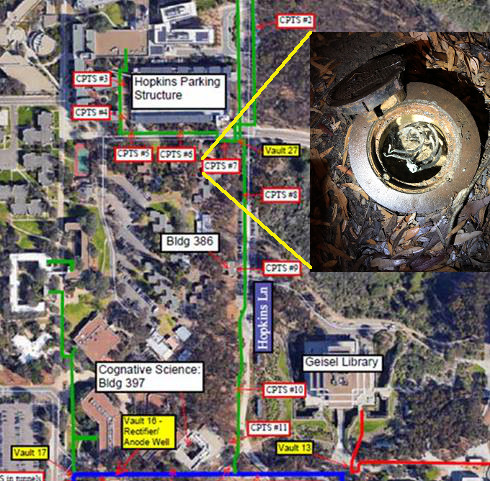
Social Interaction Tracking
Infrastructure
{ IMC'21 }
The Tock Operating System
Low-power microcontrollers lack some of the hardware features and memory resources that traditionally enable multiprogrammable systems. Accordingly, microcontroller-based operating systems have not provided important features like fault isolation, dynamic memory allocation, and flexible concurrency. However, an emerging class of embedded applications are software platforms, rather than single purpose devices, and need these multiprogramming features. Tock, a new operating system for low-power platforms, takes advantage of limited hardware-protection mechanisms as well as the type-safety features of the Rust programming language to provide a multiprogramming environment for microcontrollers.

Tock isolates software faults, provides memory protection, and efficiently manages memory for dynamic application workloads written in any language. It achieves this while retaining the dependability requirements of long-running applications.
Google recently announced the OpenSK, a fully open-source hardware security module, which is built on top of Tock.
Reproducibility, Robustness, & Rigor
{ CPS-IoTBench'21 }
Older Projects
Some of these are still (very!) active and I am simply no longer affiliated, while others have been retired, but I thought all this work was pretty cool, so I'm not quite willing to delete it from my website yet :).
GridWatch and The Open INcentive Kit
{ COMPASS'19 | GetMobile'19 | ICTD'19 | MobiCom'18 | HotMobile'14 }
Check out nLine, which is commercializing this work!
The power grid is one of humanity's most significant engineering undertakings, and it is essential in developed and developing nations alike. Yet, most grids have remarkably little introspection into their operation. GridWatch is inspired by a simple observation, a smartphone stops charging for one of two reasons: (1) The user unplugged it, (2) The power went out. Given that we can filter the first case with the phone's accelerometer, can a critical mass of smartphones act as low-fidelity, high-coverage, fine-granularity grid monitor that runs independent of local utilities? Following the promise shown by this initial inspiration, GridWatch has grown to include a rich suite of power sensing technologies, which includes custom hardware for high-fidelity measurements and ground truth and most recently ideas for non-contact voltage monitoring from project collaborators.
Today, GridWatch has micro deployments in the United States, Venezuela, Nigeria, and India. The primary deployment, branded DumsorWatch, in Accra, Ghana serves as one of the principle measurement and evaluation arms for the $498 million Ghana Power Compact and has several hundred sensors deployed and several thousand app-based participants.
Born out of the complex, wide-area study demanded by DumsorWatch, the Open INcentive Kit (OINK) is a new platform for running and managing incentive-based studies. With OINK, experimenters set up a series of rules that express when and how study participants should be incentivized. OINK monitors a study, automatically triggers incentives, and handles disbursements.
Michigan Micro Mote & MBus
{ DATE'19 | JSTS'16 | Micro Top Picks '16 | ISCA'15 | WARP'15 | CICC'14 | VLSI'14 | VLSI'14 | JSSC'13 }
The Michigan Micro Mote, or M3 project, aims to bring general-purpose computing and sensing to millimeter-scale devices. As part of this effort, we identified the system interconnect as a key impediment to further scaling the energy and area of embedded computing. To address this, I led the design of MBus, a new chip-to-chip interconnect optimized for energy-conscious designs.
The Michigan Micro Mote is on display in World's Smallest Computer exhibit the lobby of the Computer History Museum in Mountain View. You can see the exhibit online here.
Cubeworks is commercializing the M3 technology.
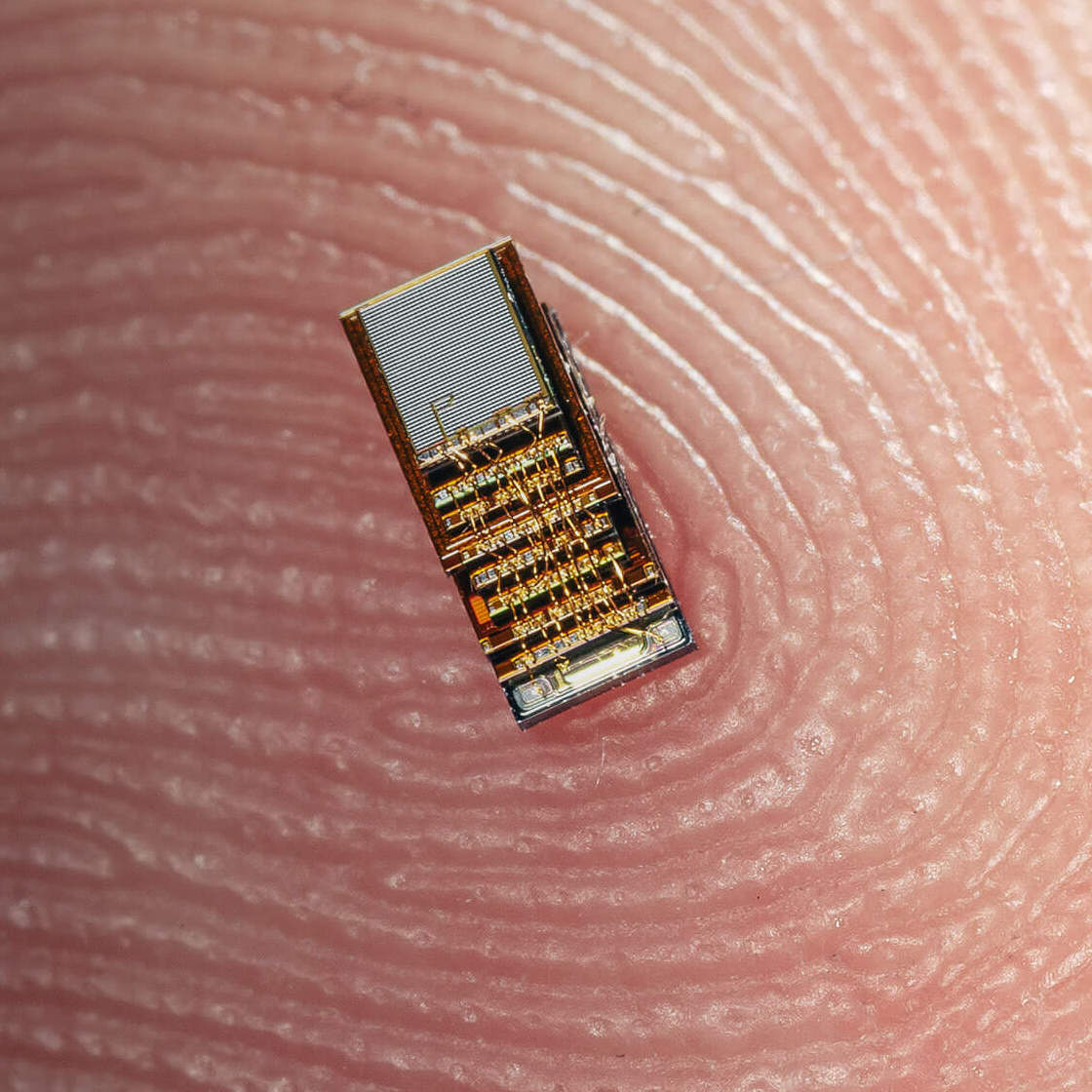

Localization
Location information is a key aspect of context-aware computing. Making location a first-class computational resource, like time synchronization or networking today, is critical to realizing visions of intelligent and reactive environments.
I have worked on several localization efforts, tackling different applications:
Slocalization
{ IPSN'18 }
For most of modern history, massive effort has gone into the careful organization, sorting, and filing of information for later retrieval. With the rise of the Information Age, we have transitioned from filing information to simply searching for it on demand, expecting our computing infrastructure to automatically find exactly what we are searching for. The same is not yet true for the physical world. While there are exceptions, the vast majority of things in the physical world remain invisible to the computational domain. Slocalization takes one small step towards enabling "search not file" for the physical world, demonstrating a sub-microwatt tag that can be localized with decimeter accuracy in complex, indoor environments using ultra wideband backscatter.
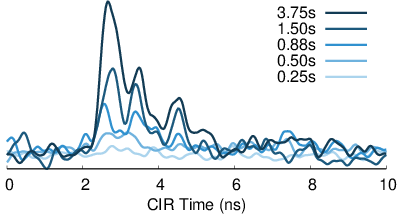


SurePoint
{ SenSys'16 | HotWireless'15 }
In late 2013, DecaWave released the first (and as of 2019 still only)
commercially available ultra wideband transceiver. While ultra wideband
provides the potential for extremely accurate range estimates, in practice
single range estimates can exhibit variation well over a meter. SurePoint
explores what's required to build a scalable, high-fidelity, and
high-reliability (29 cm 50th percentile, 77 cm 99th percentile accuracy of raw
range estimates) system atop a UWB ranging primitive.
Harmonium
{ TOSN'18 | IPSN'16 | MC2R'15 | HotWireless'14 }
Ultra wideband tracking (order 1-10 cm) with only narrowband components of lightweight (3 g), low power (75 mW or 3.9 mJ/fix), low cost (< $5 USD), fast-moving (up to 2.4 m/s) tags.
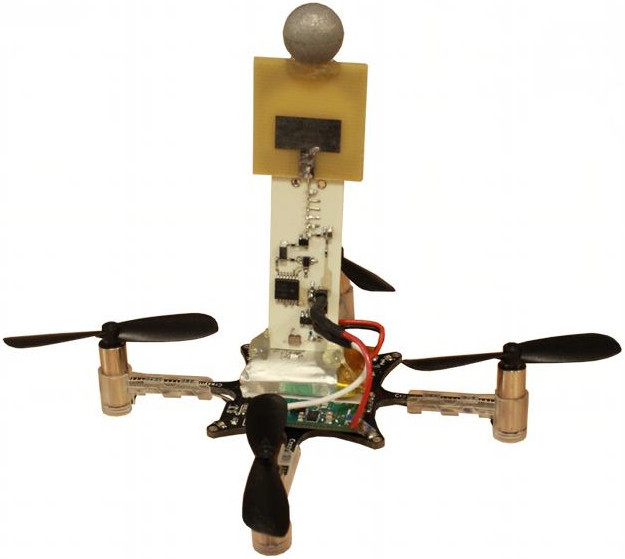
Luxapose
{ MobiCom'14 }
An exploration in using lighting infrastructure for astral navigation indoors. Luxapose spawned considerable follow-on work (with which I have no affiliation) that is really cool and looks at how to do this without requiring intelligent LED lighting infrastructure, in particular check out LiTell and some of Xinyu's other light-based localization work.
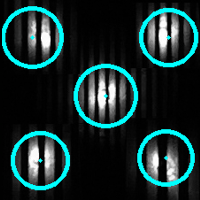
Opo
{ SenSys'14 }
An exploration in relative location, a low-power (126 J/day) wearable badge that provides high fidelity (centimeter-accurate, second-level granularity) human interaction information.
Opo was initially developed in partnership with epidemiologists interested in understanding the impact of interaction time and distance on the spread of flu in elementary school settings. The platform has since also been adapted to support handwashing studies in hospital settings.
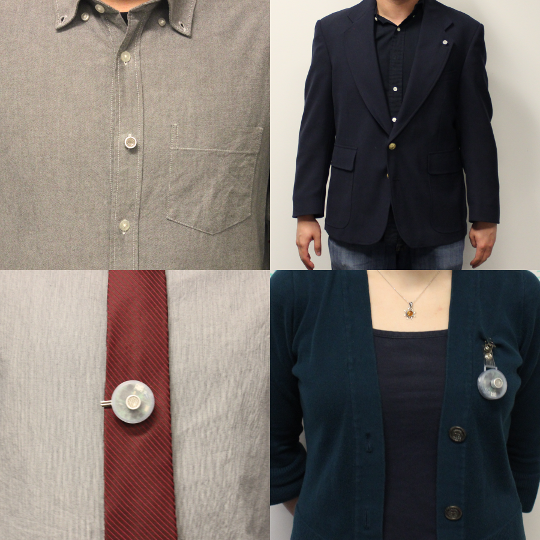
The Signpost City-Scale Sensing Project
{ IPSN'18 }
City-scale sensing holds the promise of enabling deeper understanding of our urban environments. However, a city-scale deployment requires physical installation, power management, and communications—all challenging tasks standing between a good idea and a realized one. The Signpost project aims to provide a platform that enables easy deployment and experimentation for city-scale applications.
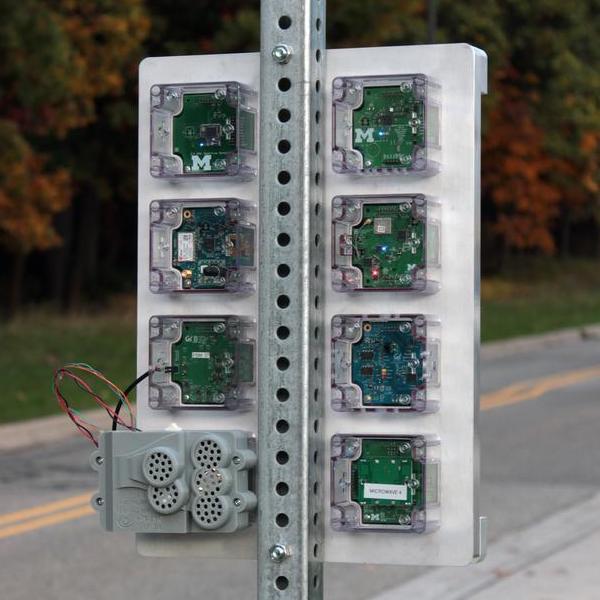
Miscellaneous
These are the conferences I generally follow, courtesy of ConfSearch.
Working on, or reviewing, any empirical work? Check out the Empirical Evaluation Guidelines checklist.
I am happy to share slides from any presentation I give. I generally try to post slides from major talks, but if something is missing that you are interested in, please reach out and I will add it.
I have been fortunate to be successful in many fellowship applications. This is due in no small part to excellent guidance from my colleagues and mentors. I am happy to share some of that advice and my application materials here.
Here are my application materials from the faculty market. Hopefully they are helpful.
- Here are thoughts (now with updates from Branden Ghena) on video interviews. There are many great guides (Wes Weimer's Job & Interview guide probably the best) for the process as a whole, but a bit less written on video pre-interviews as they're newer. Hope this helps; but mind the age of these thoughts as time marches on.
My dissertation (and sources to build it) is available here – best of luck to all those working on theirs.
One of my favorite parts of academia is the opportunity it has afforded me to travel the world. Here's all the countries I've made it to thus far (also US states I've spent any appreciable time in).
One lesson from travel is that much of the web is inaccessible from areas where internet access is unreliable or expensive. There is a neat tool that estimates the literal cost of loading your webpage. I appreciate Dan Luu's metric of aiming to be smaller than the JavaScript used by Google's AMP.
I am a proud alumnus of the Lab11 research group, headed by Dr. Prabal Dutta. During graduate school, I was a National Defense Science & Engineering Graduate (NDSEG) Fellow (2013), a National Science Foundation Graduate Research Fellowship Program (NSF GRFP) Fellow (2013), and a Qualcomm Innovation Fellowship (QIF) Fellow (2013). My graduate studies were also generously supported by the Semiconductor Research Corporation through both the TerraSwarm program (part of STARnet) and the CONIX center (part of JUMP).
These are some references I've found useful, as much links for myself as anything—
Text required by CA Prop 209: "This initiative is open to all eligible members and does not discriminate against, or grant preferential treatment to, any individual or group on the basis of race, color, national origin, religion, sex, disability, and/or other protected categories."
